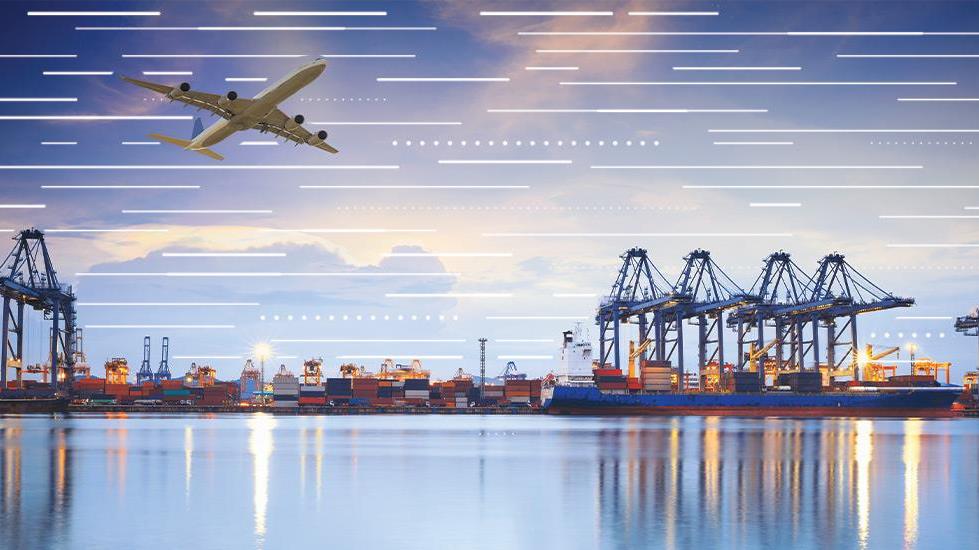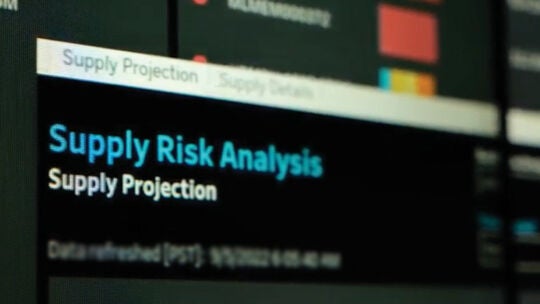
With supply chain resilience now a C-suite priority, Flex shares our thoughts on regionalization as a strategy towards supply chain resilience. To see previous posts in this blog series, The Supply Chain Resilience Imperative, please read Is Your supply chain ready for a new world?, Applying supply chain resilience levers, and Resilient supply chains via digitization.

In the 2000’s, businesses across industries sought to profit from international markets’ beneficial materials and labor costs. Pulitzer Prize-winning author and journalist Thomas Friedman’s 2005 best-seller ‘The World is Flat’ passionately outlined a new “free-trader” philosophy that believed the competitive playing field between industrial and emerging market countries had shrunk. Rather than geographic “haves” and “have nots,” the world morphed into a complex global supply chain. Global businesses were able to build products better, cheaper, and faster, while many European and Asian countries exponentially grew their economies using the outside investment.
Over the past several years, some of that thinking started to change. Spurred by rising tariffs and labor costs in global markets, companies began to explore regionalized supply chains. Last year, the demand shocks of COVID-19 intensified the discussion.
As the coronavirus spread through Asia, many businesses found their sourcing, logistics, and manufacturing operations at a forced standstill as these countries fought public health battles locally. A recent McKinsey poll of senior supply chain executives found that 75% of respondents faced production and distribution issues that required changes in the future and 48% experienced delays in planning decisions because of remote working. Many businesses found it difficult to meet demand because their products were manufactured thousands of miles away from their customers. The hard lessons learned last year accelerated the thinking of many supply chain professionals to consider regionalizing their supply chain.
Supply chain reconfiguration is a mammoth undertaking that takes enormous planning and sustained commitment over years, not months and quarters. If you’re investigating whether regionalization makes sense for your manufacturing ecosystem, here are four things to keep in mind.
1. Reconfiguring your global supply chain requires many actors and decisions. Start by defining your strategic goals.
We would be mistaken to equate regionalization with reducing supply chain dependence on any one country. At the end of the day, regionalization is an exercise in spreading bets and de-risking your entire chain.
Understand what you’re trying to achieve by regionalizing so that you can redesign and optimize your value chain in alignment with your goals. If you’re trying to reduce time to market, relocating to jurisdictions that better serve your end markets will call for a different approach than if your goal is to diversify your supply base.
Regionalization begins with a long discovery process involving data collection, countless spreadsheets, costing models and decision trees — not to mention the need to engage cross-functional teams as these decisions have far-reaching implications. Supply chain professionals will need to constantly discuss, debate and decide on the micro and the macro.
For instance, if you’re thinking of reshoring the manufacturing of certain parts, you’ll first need to identify the raw materials and evaluate each by its degree of movability. Many regions have invested heavily in their infrastructure and talent pool to become leaders in manufacturing specific components or products. Asia, for instance, is a global leader in consumer electronics so it would be difficult to move out of the region. There is risk in this, however, as evidenced by 2021’s semiconductor shortage.
Asia is the primary manufacturing region for most semiconductor suppliers, and they’ve had trouble responding to increasing demand across several segments. The manufacturing of chips is an extremely complex process and lead times can be up to 26 weeks to produce a final device. This manufacturing process cannot be easily moved or rapidly expanded.
For many other inputs, migrating production may be more feasible. Plenty of production hubs for metals and plastics exist in Europe and Latin America: it’s a matter of expanding the supply chain. Given the well-established sourcing and manufacturing ecosystems in certain markets, however, you may find that it is still cheaper to produce the parts in the incumbent market and ship them than to establish a new site across the world to produce these parts.
Additionally, where are your growth markets over the mid- and long-term? As labor costs rise in developing economies, only 18 percent of goods traded is based on labor-cost arbitrage, which means developing countries are consuming much of their own output. This raises the specter that your own products could possibly be consumed from the rising middle class in the countries where you’re trying to diversify away from.
In the end, there’s no one-size-fits-all regionalization model. Supply chains and end markets will look different from one industry to the next. Value chains in the apparel sector tend to be globally dispersed while automotive is regionalizing for greater proximity to end customers. On the other hand, electronics manufacturing is centralized in China which supplies most of the world’s printed circuit boards, a critical component in electronic goods.
The takeaway: start by understanding your strategic goals for restructuring your value chain. Take a simultaneously bottoms-up and top-down approach to regionalization and synthesize all the dynamics in play. And be sure to include cross-functional teams across your organization as you commence your discussion.
2. Beware of hidden costs
To begin the supply chain regionalization conversation, a good starting point is getting a handle on the total cost for shifting manufacturing centers.
As you ponder the production of inputs to migrate, weigh all of the possible replacements for your incumbents across the ecosystem from commodities suppliers to freight forwarders.
Factors like the weight of finished goods and their impact on the downstream supply chain also need to figure into the equation. It’s a lot easier and cheaper, for instance, to move silicon chips around than treadmills. Meanwhile, the logistics market is also changing. Pre-COVID, an estimated 40% of global air cargo was being shuttled via passenger aircraft. With fewer commercial passenger planes in operation these days, the logistics market is squeezed on capacity.
Keep in mind too there’s a one-time cost to reconfiguring the supply chain that could change the entire calculus. Plastic and metal parts, for instance, are made by using various fabrication and machining techniques. Since the tools for making these parts are sunk investments across existing shop floors, it could be very difficult to transfer them.
You can certainly build excess inventory before moving the tools to the new site. But this transfer is a sizable investment and may result in equipment loss and breakage. Alternatively, you could invest in new tooling or kick off your supply chain migration with a ramp of your next-gen products and start with new tools. If your manufacturing process requires highly specialized machinery that were built in only one country, you may need specialists from that country to maintain and repair them.
Figuring out how additional costs will be absorbed by the business is arguably the most challenging component of the regionalization decision process. Are you going to ask your customers to pay the overhead to de-risk your supply chain? Are you willing to risk the loss of market share as a result of raising your prices? This is where the pontifications end and market analysis begins, an exercise that could make or break the supply chain regionalization strategy.
The takeaway: comb through every nook and cranny of your production ecosystem to surface hidden costs. No detail is too small.
3. You’ve regionalized. Have your suppliers?
Regionalization strategies must include supplier management. After all, just because an organization decides to regionalize operations doesn’t mean its partners are prepared to support this shift. Work closely with suppliers and partners to learn how they are sourcing materials and where — if applicable — their assembly operations are based. Supply chains have become complex ecosystems of not just materials and parts but also of resources and capabilities. Businesses run the risk of negating all the benefits of their regionalization efforts.
The key takeaway: strong supplier relationships built on open communication are critical.
4. Gear up for a marathon
Just as countries did not become global manufacturing powerhouses overnight, businesses will similarly take time to diversify their global supply chains. At Flex, we have discussed supply chain diversification with many customers over the years, but the hurdles are relatively high when it comes to taking action. The road to a decision is a long one; identifying target sites, transferring tooling, and finding a skilled workforce takes time, research, and resources. For those businesses running a mature, globally integrated supply chain, the decision is even harder.
The growing chatter about expanding supply chains may be inducing anxiety among supply chain managers who have yet to draw up regionalization blueprints and roadmaps. The good news is there’s no need to fret. There has been more talk than action when it comes to adopting a regionalized model. Why? Because it’s tough to execute.
The takeaway: In the end, there’s no one-size-fits-all regionalization model. Supply chains and end markets will look different from one industry to the next. Supply chain professionals mulling whether regionalization is right for their organization should initiate internal and external conversations to scope the opportunities. If the numbers support the business case, the next steps are detailed planning, vetting, research, and analysis. All of this will require enormous time and effort since regionalization is a marathon, not a sprint. Expect the journey to be littered with many starts and stops along the way. At the end of the day, the key is to know your goals and stay the course.


